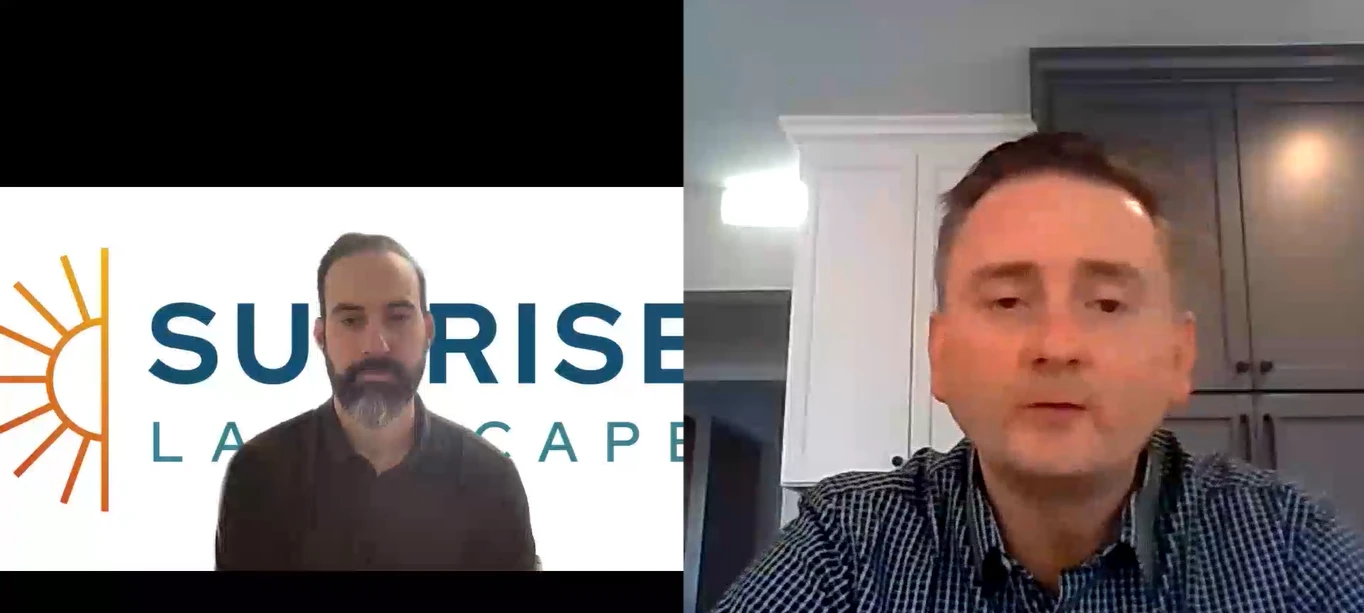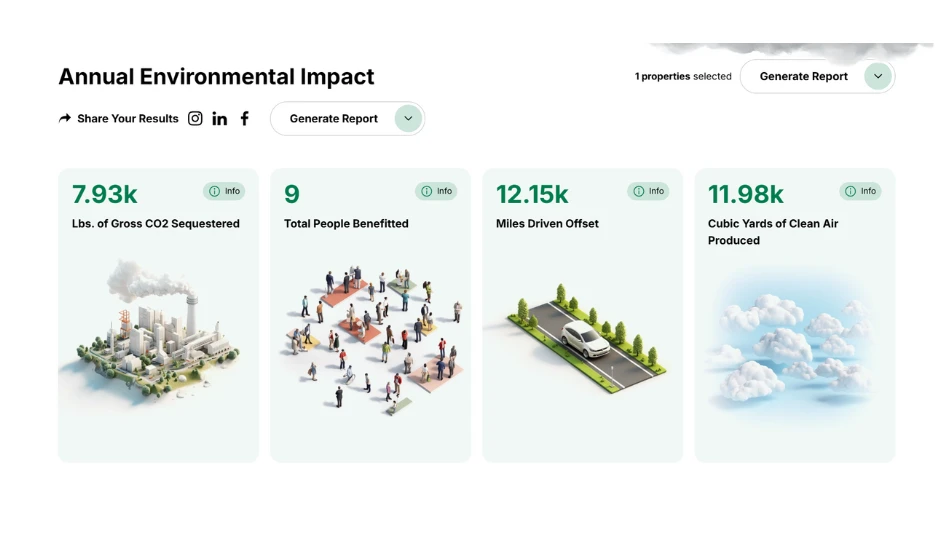Every contractor’s fertilization program is different based on location and the type of materials being used.
For example, Chris Senske, president, Senske Lawn & Tree Care, Kennewick, Wash., has a fertilization program that consists of granular and liquid applications. "In our arid climate markets, we start early in the season with a blend of soluble and controlled-release fertilizer coated with a preemergent," Senske explained. "That is followed up with liquid applications of fertilizer, herbicides and insecticides as needed during the mid-season. The mid-season fertilizer is a slow-release type mixed with a balanced blend of soluble nutrients and micronutrients. At the end of the season, we return to a granular application.
"In our rainy climate markets, we do the opposite," Senske continued. "We start the season with fertilizer and nutrients that control moss as a side benefit in a liquid blend. Then we move on in the mid-season to granular applications, ending the season with lime."
Across the country in Long Island, N.Y., Jon Henry Gladwish, president, Organic Lawn, uses liquid and granular organic fertilizers from March to December. "Each lawn gets at least one liquid seaweed application for micronutrients and growth hormones and at least four granular applications of nutrient sources like kelp meal, compost, rock minerals, composted poultry manure, dairy whey and corn gluten," Gladwish commented. "I concentrate on getting the soil into the best possible condition, and I make sure all my new accounts are soil tested."
Programs like Senske’s and Gladwish’s work – no matter how different their approaches – because of the extensive research each contractor does to make sure his program meets his market’s needs. This, in addition to following recent trends, doing more with fewer applications and improving the condition and health of the soil, can make a fertilization program work successfully.
A WORKING PROGRAM. To establish a fertilization program that works, Ray Buckwalter, product manager, Lebanon Turf Products, Lebanon, Penn., claimed that contractors have to determine what arena they intend to play in. "Fertilization programs come in two basic flavors: customized and generic," Buckwalter said. "Generic programs have a limited menu and the quality is mediocre, but the lower price points make it an acceptable compromise for many customers. Generic programs offer simplicity to the contractor, but are by definition undifferentiated. Any savings derived from simplicity and economies of scale can be quickly eroded as you face more pricing pressure from your competition.
"Ideally," Buckwalter continued, "programs are developed on a customer-by-customer basis. The critical step in this process is to assess the client’s expectations. This includes assessing how the client wants to use the turf area, how much money he or she expects to spend and what maintenance he or she intends to perform. For any program to be successful, there needs to be a set of well-defined goals that balance the agronomic results and costs."
In Senske’s program, making sure the lawn is green yet doesn’t grow so fast that the customer becomes frustrated with excessive growth is important, Senske said. "Even more important in most of our markets is weed control," he added. "Our customers tell us that making a lawn green is not what they struggle with. They have problems keeping the lawn free of weeds like spurge, oxalis, clover, violets, thistles and plantain. We would rather spend time fine tuning how the fertilizer enhances the herbicide program than worrying about whether we delivered the exact prescription treatment of nutrients."
A fertilization program that meets the changing needs of the turf doesn’t have to be sophisticated, noted Bob Staib, a consultant with NuGro Technologies, Grand Rapids, Mich. "Remember that cool-season grasses require two-thirds of the total nitrogen for the year from mid-August through November and one-third of the total nitrogen needed from April 1 through mid-August," he said. "For warm-season turf, the solution is flip-flopped. The emphasis is in the spring and early summer. A successful fertilization program should also take advantage of aeration to incorporate a fertilizer that stimulates roots and microbial activity."
All good fertility programs are designed around the natural growth cycle of the plants being fed, Buckwalter mentioned. "As plants go through different growth stages, their needs change," he said. "A good fertility program takes this into account and provides the necessary nutrients at the optimum times. Changing weather patterns and maintenance practices alter this seasonal cycle. One of the biggest influences is water. When rainfall exceeds normal levels, grasses produce more shoot growth, and this extra production requires more nitrogen to maintain color and shoot density. In a drought, growth slows or stops so less nitrogen is needed. Temperature, wind, mowing frequency, mowing height and many other factors can affect growth. In most cases, minor adjustments in timing and rates are all that is needed to keep everything in balance. In extreme cases, adding or omitting applications can be prudent."
| Fertilization | |||||||||||||||||||||||||||||||||
|
Strategies
A fertilization program needs to adapt to meet the demands of changing turf conditions. Ray Buckwalter, product manager, Lebanon Turf Products, Lebanon, Penn., offered these suggestions. (N=nitrogen, P=potassium, K=phosphorous)
|
TREE & SHRUB NEEDS. In landscape settings, trees and shrubs and non-turf groundcovers need fertility just like the lawn, Buckwalter pointed out. "The natural mechanisms of nutrient cycling that feed forest trees are interrupted because we don’t allow leaf litter to accumulate and decompose," he said. "Since most ornamentals have larger root systems than turf, they have access to larger volumes of soil and store more carbohydrates. For this reason, they generally don’t need to be fed as often. Mature trees can be fed once per season in the fall, while smaller ornamentals, flowering trees and shrubs usually benefit from a spring and fall feeding."
Senske’s tree and shrub fertilization program works almost exactly as Buckwalter suggested and takes place in the spring and fall. "We want to make sure that we don’t fertilize in the summer and early fall seasons so that the trees do not force tender growth that could be frost damaged," he explained.
At Hendricksen the Care of Trees, Wheeling, Ill., the tree and shrub fertilization program is tailored to each site. The company, which focuses on tree and shrub care only, provides fertilization needs by prescription. "We don’t take prescription fertilization to the limit some people think it should be taken to, but we do minimize our use of phosphorous and potassium and use low levels of nitrogen," explained Rex Bastian, vice president of technical services. "With trees, judgement calls cannot be made. A suitable program for one tree may be different for another tree."
Over his past 11 years with the Care of Trees, Bastian has also noticed an increase in the amount of slow-release nitrogen sources being used in the company’s tree fertilization program. "Eighty-five percent of the nitrogen in the materials we use is now of a slow-release kind," Bastian said. "Fast-release nitrogen sources tend to be more leachable, and by minimizing those materials you minimize leaching that occurs as a result."
"If slow-release nitrogen is used, more can be applied at once without loss to volatilization and leaching," Buckwalter added. "This increases material costs but reduces labor."
Usually the greatest need for fertilization of trees and shrubs comes after stress has been placed on the plants and brings unhealthy conditions to the customer’s attention. "Unfortunately, this is usually too late," said Richard Pete, president, Planet Green, Charlotte, Vt. "Compaction, water percolation and soil structure are all critical to tree and shrub health, which is why a healthy balanced fungal-based microbial population can do wonders for trees and shrubs."
When access to the soil around a tree is obstructed or if adding organic matter to the soil won’t make a big enough change to nourish a tree, other methods of fertilization have to be used. "Trunk injection is used when a tree is in such rough shape that maybe it doesn’t have time to wait for a different approach," Bastion explained. "Trunk injections do wound trees, though. Some people don’t believe in wounding a tree any further when fertilizing it. Too many people think that if a tree is dying, all they have to do is fertilize it and it will be fine. Fertilization isn’t a cure. Just because you maintain proper nutrition, doesn’t mean the tree won’t come down with a disease. Every tree is different and can’t be treated the same."
| Using Fertilizer |
|
Combination Products
Every contractor in the industry has a problem with tight labor markets. So, the fact that fertilizer combination products have gained popularity because they save labor by providing two applications in one and eliminate the need for large scale spraying equipment because they are granular is no surprise, pointed out Ray Buckwalter, product manager, Lebanon Turf Products, Lebanon, Pa. The biggest use for fertilizer combination products is the application of fertilizer and preemergent crabgrass controls. "This is an excellent fit since preemergents are usually applied to the entire turf area," Buckwalter remarked. "New chemistry and formulations are making fertilizer with postemergent weed control and preventative grub infestation products also work well. These combinations can be valuable tools in the total maintenance program and offer advantages of granular fertilizers with control products that would traditionally be sprayed. With the multitude of products available, contractors can almost always find a product that matches the correct fertilization needs with the desired control product." Approximately 50 percent of contractors are using fertilizer combination products, said Bob Staib, a consultant with NuGro Technologies, Grand Rapids, Mich. "They are approximately 20 percent more expensive than fertilizer products alone, but the convenience factor and labor savings overcome that cost." While fertilizer combination products provide time savings, liquid or straight granular products are still best suited for some applications, including where spot treatment is needed or foliar contact is essential, Buckwalter said. "And many herbicides and fungicides are still best applied as liquid formulations." On the organic side, most pesticides are separate from fertilization materials, pointed out Jon Henry Gladwish, president, Organic Lawn, Long Island, N.Y. "However, many good organic materials have numerous disease suppression qualities similar to composts," he said. |
PUMP UP THE SOIL. As Bastian and Pete pointed out with trees, one of the most important factors for the long-term health of the turf is the condition of the soil. "Most contractors would like to be able to save the client money while still growing profits. By managing soil health, contractors can experience cost savings over time in reduced maintenance costs, use of less pesticides and healthier turf," Pete said.
Plants require approximately 16 nutrients for optimum growth, according to Kenny Bailey, agricultural extension agent, North Carolina State University Cooperative Extension. Often, Bailey said the soil doesn’t hold enough of these nutrients in the quantities needed for desirable growth and production.
"Soil testing is the only way that you will know what nutrients are in the soil," Bailey stressed. "If you have sufficient amounts of elements, such as phosphorus, then there is no need to apply phosphorus. The only way that you will know this is by testing the soil."
Based on what looking into soil conditions can do for a fertilization program, Buckwalter said the extra $5 to $10 spent on a soil test is worth the time and cost. "The information a soil test provides about pH, buffer capacity, soil texture, phosphorus and potassium can save many times the test cost in materials and improved results," he said.
Gladwish charges his clients $45 to conduct a soil test on their properties and considers the cost justifiable in terms of how it structures his fertilization program. "Soil testing is possibly the best bargain that I offer," Gladwish said. "Some clients utilize me for the soil test only. Through the soil test, I can customize each individual fertilization program. After getting the test results, the lab’s recommendations and my review of the test, clients realize that the fee for the test was money well spent."
The only thing a soil test cannot do, according to Buckwalter, is provide quantitative information on available soil nitrogen. "To assess the need for nitrogen, the contractor must consider many other factors, such as the type of grass and the type of soil, the fertilization history and the mowing and irrigation practices."
The author is Associate Editor of Lawn & Landscape magazine.

Explore the June 2000 Issue
Check out more from this issue and find your next story to read.
Latest from Lawn & Landscape
- Bartlett Tree Experts gave away 50,000 tree seedlings for Arbor Day
- Connect, Control & Conserve with Horizon Technical Services
- Use Horizon's Parts Hotline
- How I built a Top 100 company
- Horizon’s Exclusive TurfGro Fertilizer
- Grow your business with mosquito control
- LandCare adds 2 branches in SoCal, promotes Aleman to branch manager
- Spray them away





